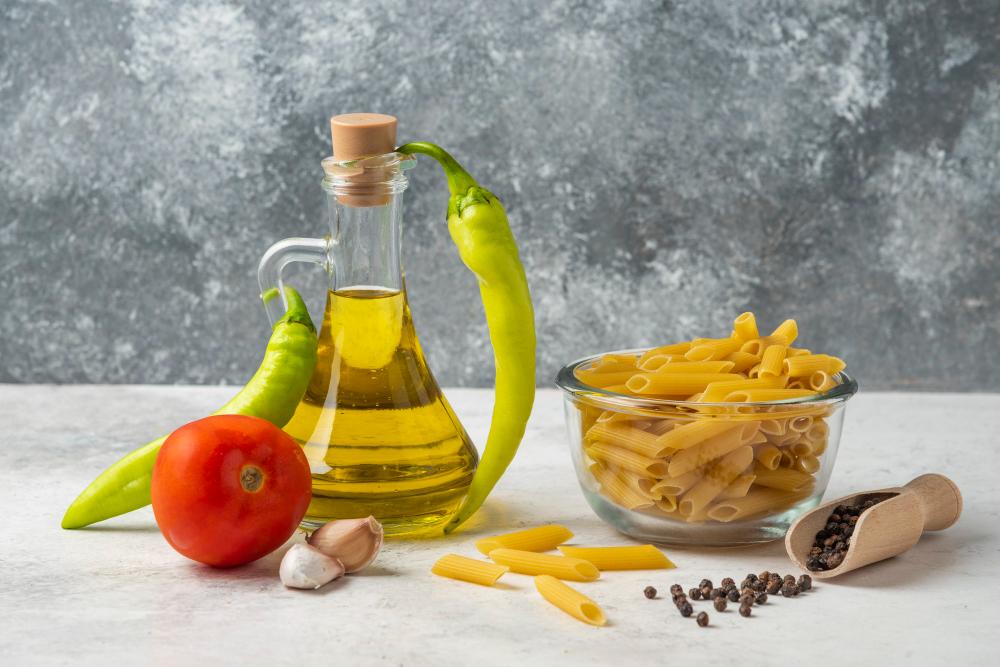Exploring the World of Healthy Fats: The Ultimate Guide to Cooking Oils

While cooking oils are an essential component of any kitchen, they are not made equally. The choice of oil can significantly impact the flavor of your dishes as well as your overall health. With so many options available in supermarkets, it can be overwhelming to choose the best oil for your needs. This guide will explore various types of cooking oils, their health benefits, and how to use them in your daily cooking.
Understanding the Basics: What Are Cooking Oils?
Cooking oils are fats that are extracted from various plants, seeds, nuts, or animal products. They play a crucial role in cooking, not only for frying and sautéing but also as a key ingredient in dressings, marinades, and baking. The nutritional profile of cooking oils varies greatly, making it essential to choose oils that align with your dietary needs and cooking methods.
Types of cooking oils and Their Health Benefits
Olive Oil
Olive oil is a popular choice in Mediterranean cuisine and is known for its rich flavor and numerous health benefits. Because of its high content of monounsaturated fats, it may help lower harmful cholesterol levels and the risk of heart disease. Extra virgin olive oil, in particular, is packed with antioxidants and has a low smoke point, making it ideal for salad dressings and low-heat cooking.
Coconut Oil
Coconut oil has gained popularity for its unique flavor and versatility. It's rich in medium-chain triglycerides (MCTs), which are metabolized differently than other fats and can provide a quick energy boost. Coconut oil should be used sparingly nevertheless, as it contains a lot of saturated fats. It's excellent for baking and sautéing, especially in dishes that benefit from a hint of coconut flavor.
Avocado Oil
Avocado oil is a nutrient-dense option, rich in monounsaturated fats and vitamin E. It is appropriate for high-heat cooking techniques like grilling and frying because of its high smoke point. Its mild flavor also makes it a great choice for salad dressings and dips. Avocado oil can be found in most supermarkets, often in the health food or organic section.
Canola Oil
Canola oil is a versatile and budget-friendly option commonly used in many households. It's low in saturated fat and high in omega-3 fatty acids, which are beneficial for heart health. Canola oil has a neutral flavor and a high smoke point, making it suitable for various cooking techniques, including baking, frying, and stir-frying.
Sesame Oil
There are two types of sesame oil available: toasted and untoasted. Toast sesame oil has a strong, nutty flavor and is best used as a finishing oil or in Asian-inspired dishes. Untoasted sesame oil has a lighter flavor and can be used for sautéing and frying. Both varieties are rich in polyunsaturated fats and antioxidants, making them a healthy choice.
Flaxseed Oil
One form of omega-3 fatty acid that is abundant in flaxseed oil is alpha-linolenic acid, or ALA. It's best used as a finishing oil in cold dishes like salads and smoothies due to its low smoke point. Flaxseed oil should be stored in the refrigerator to prevent oxidation and maintain its nutritional benefits.
Peanut Oil
Because of its neutral flavor and high smoke point, peanut oil is a common choice for frying. It's also used in Asian cuisine for stir-frying and as a base for sauces. Peanut oil contains monounsaturated fats and resveratrol, a compound that may have antioxidant properties. It's widely available in supermarkets and can often be found in the international foods aisle.
How to Choose the Right Cooking Oil
When choosing cooking oils, consider the following factors:
- Smoke Point: An oil's smoke point is the temperature at which it begins to emit smoke and undergo degradation. Oils with high smoke points, like avocado and peanut oil, are suitable for high-heat cooking. Oils with low smoke points, like extra virgin olive oil and flaxseed oil, are best used for low-heat cooking or as finishing oils.
- Flavor: Some oils have strong flavors that can enhance certain dishes, while others are more neutral. Select an oil whose flavor goes well with the ingredients in your meal.
- Nutritional Profile: Consider the fat content and nutritional benefits of the oil. For example, oils high in monounsaturated fats, like olive and avocado oil, are generally considered heart-healthy.
- Usage: Think about how you plan to use the oil. Some oils are versatile and can be used in various dishes, while others are better suited for specific cooking methods.
Storing cooking oils
Proper storage of cooking oils is essential to maintain their quality and prevent them from going rancid. Most oils should be stored in a cool, dark place away from heat and light. Oils with high polyunsaturated fat content, like flaxseed oil, should be refrigerated. Always check the expiration date and discard any oils that have developed an off smell or taste.
Conclusion
Cooking oils are a versatile and essential component of cooking, offering a range of flavors and health benefits. Whether you're frying, baking, or making a salad dressing, there's an oil for every culinary need. By understanding the different types of cooking oils and their uses, you can make informed choices that align with your dietary preferences and cooking style. The next time you're at the supermarket, take a moment to explore the variety of oils available and experiment with new flavors in your kitchen.
- Art
- Causes
- Best Offers
- Crafts
- Dance
- Drinks
- Film
- Fitness
- Food
- Games
- Festival
- Gardening
- Health
- Home
- Literature
- Music
- Networking
- Other
- Party
- Religion
- Shopping
- Sports
- Theater
- Wellness



